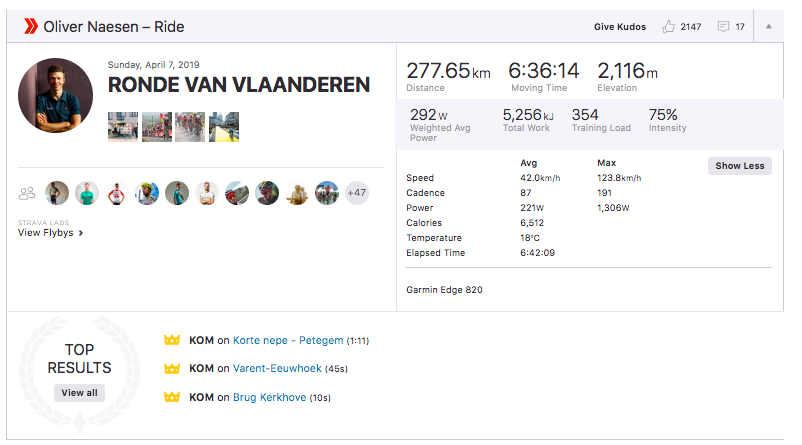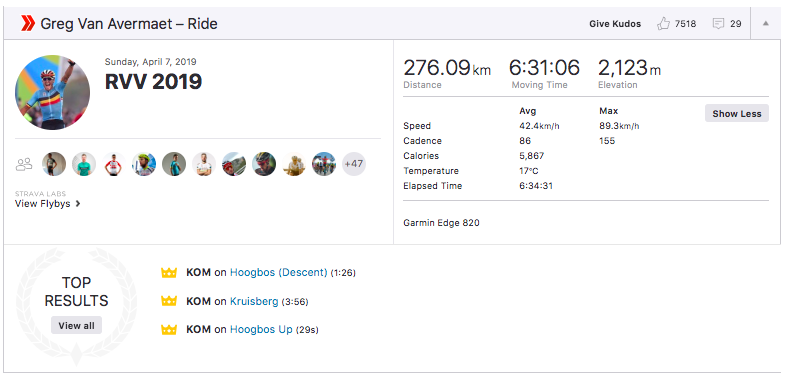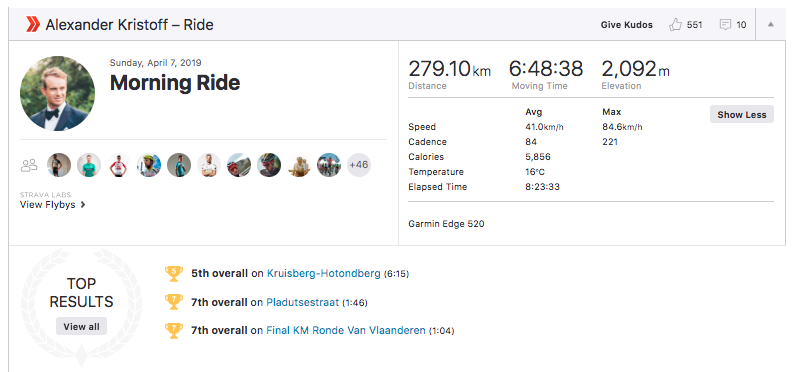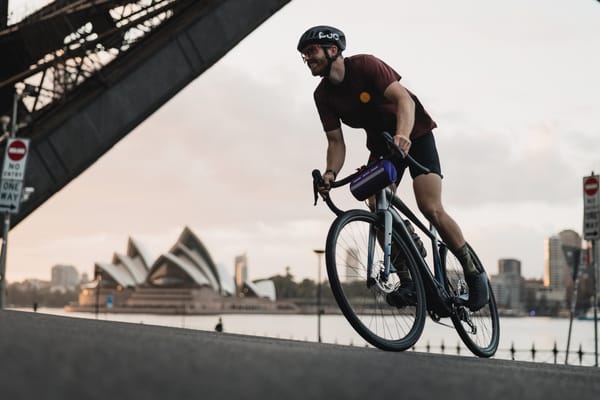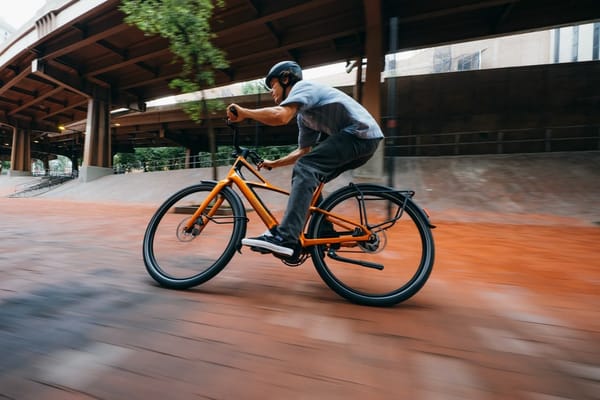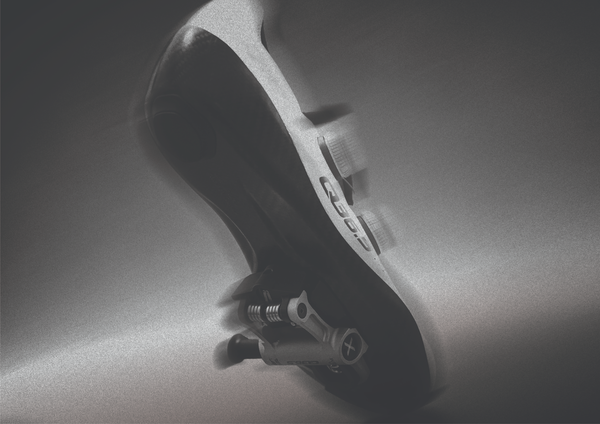2019 Tour of Flanders Recap
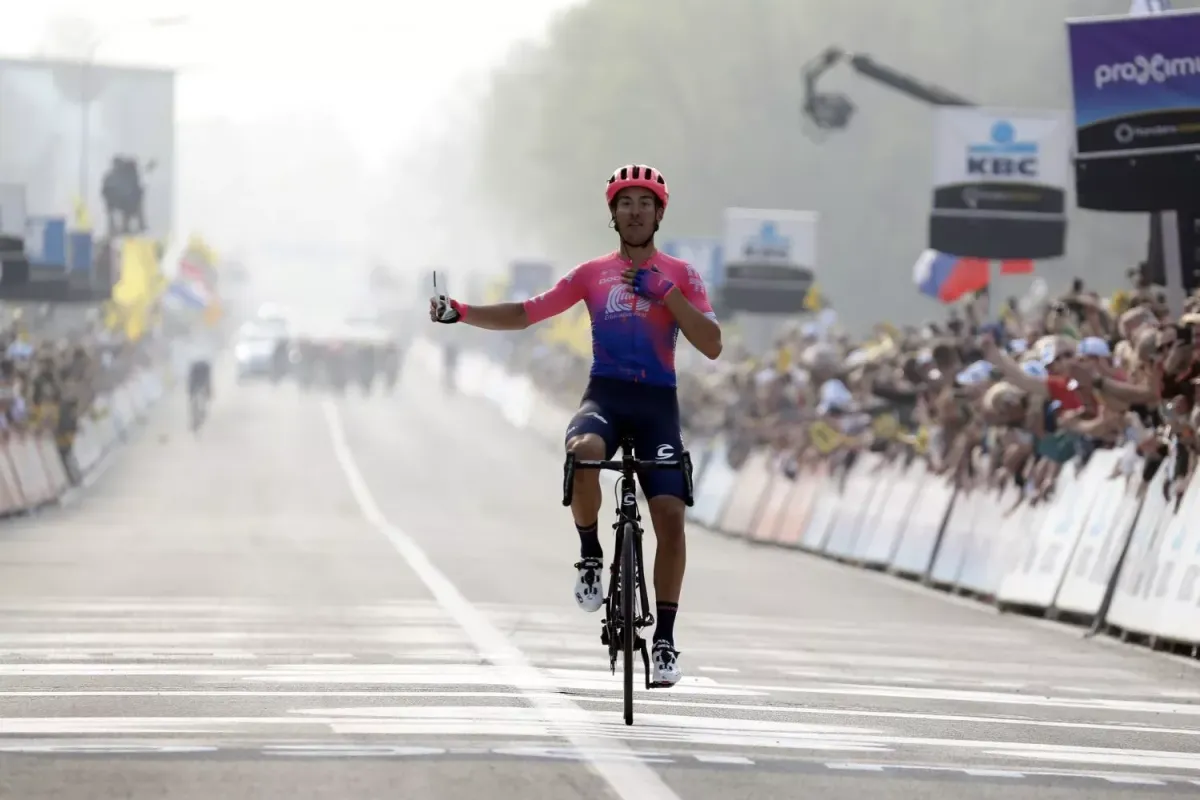
A big day for Italian cycling
The Tour of Flanders offered up a big day for Italian cycling fans. First, Maria Basianelli put the end cap on a fantastic spring by winning the women’s race, then Alberto Bettiol stunned everyone with his win in the men’s race.
Bastianelli’s win was certainly more predictable. The Virtu Cycling rider is in absolutely incredible form, claiming victories at Omloop van het Hageland and Ronde van Drenthe and now Flanders.
Few, however, saw Bettiol’s win coming. He showed promising form in his fourth place finish at the E3 BinckBank Classic, but no-one was prepared for how explosive he would be on the final ascent of the Oude Kwaremont.
The huge efforts it takes to compete for the win
The Tour of Flanders is the hardest race in the world.
But how hard is Flanders really? Thanks to the wonders of Strava, we can get a look at the insane efforts riders put in.
Ag2r La Mondiale’s Oliver Naesen recovered from illness to finish a with very respectable seventh place, further cementing his strong performance in the Classics this year.
He took four KoMs over the course of the day, all on flat and fast segments and he put out a weighted average power of 292 watts. For six and a half hours, yeesh.
Greg Van Avermaet (CCC Team) finished 10th on the day. The Belgian claimed the King of the Mountain on the final ascent of the Kruisberg with a time of 3:56.
On the subject of that climb, he held an average speed of 27.3km/h (16.9mph) over the 2km climb. It took 381 watts average over the distance and hitting 928w maximum to achieve the KOM.
Alexander Kristoff (UAE Team Emirates) finished third on the day, taking the bunch sprint behind Bettiol. Kristoff averaged 41km/h (25.5mph) over the 270km and hit a maximum speed of 82km/h. Kristoff didn’t upload his power data to Strava.
Deceuninck – Quick-Step comes up short
Almost as big a story as who won the race is who lost it.
They might have won a total of 20 races this season, including five WorldTour Classics, but Deceuninck – Quick-Step couldn’t put it together at the Tour of Flanders.
Zdenek Å tybar was missing during the endgame of the race, Philippe Gilbert was clearly still under the weather with stomach problems, Yves Lampaert simply didn’t have the legs to make any attacks, and Bob Jungels could hardly stay in contact on the last ascent of the Paterberg.
Some redemption for Quick-Step can be found in the performance of Kasper Asgreen. The 24-year Dane was major animator early in the race, spending nearly 40km off the front. He even had the legs to attack out of the chasing group and secure a suprising second place on his debut Tour of Flanders.
Most surprising of all, was that Deceuninck – Quick-Step was outdone, by their own tactics, by EF Education First. Sep Vanmarcke set up the attack that gave Bettiol the win – selflessly sacrificing his own chances by dropping back from a leading breakaway he was in. Then, Sebastian Langeveld did an equally outstanding job of disrupting the chasing pack, allowing Bettiol to stay away for his solo 17km run up to the finish. The playbook was writtin by QS and EF ran with it.
Van der Poel is tough as hell
Bad luck at the Tour of Flanders often means more than losing a podium spot. There were plenty of painful reminders just how tough the race is this weekend. Niki Terpstra’s (Direct Energie) title defense came to a scary end when he hit the tarmac early in the race.
Crash and end of the race for our 2018 winner @NikiTerpstra 🤕 We wish him a speedy recovery! #RVV #RVV19 pic.twitter.com/9ACBs9T2vC
— Ronde van Vlaanderen (@RondeVlaanderen) April 7, 2019
Later in the race, when Mathieu van der Poel (Corendon-Circus) lost his balance after suffering a mechanical during the lead-up to the second ascent of the Oude Kwaremont, the force with which he went over his handlebars made it clear his day had come to a premature end
He sat on the road holding his arm in a position that screamed broken collarbone. Then, almost miraculously, he remounted his bike and began to chase back up to the peloton.
Merely finishing the race would have been impressive, but van der Poel was determined to do more than that. He stormed up the Kwaremont, weaving his way through riders dropped by the peloton.
Despite the effort to rejoin, van der Poel still had the legs to not only get into position over the final climbs, but also to sprint for fourth place.


